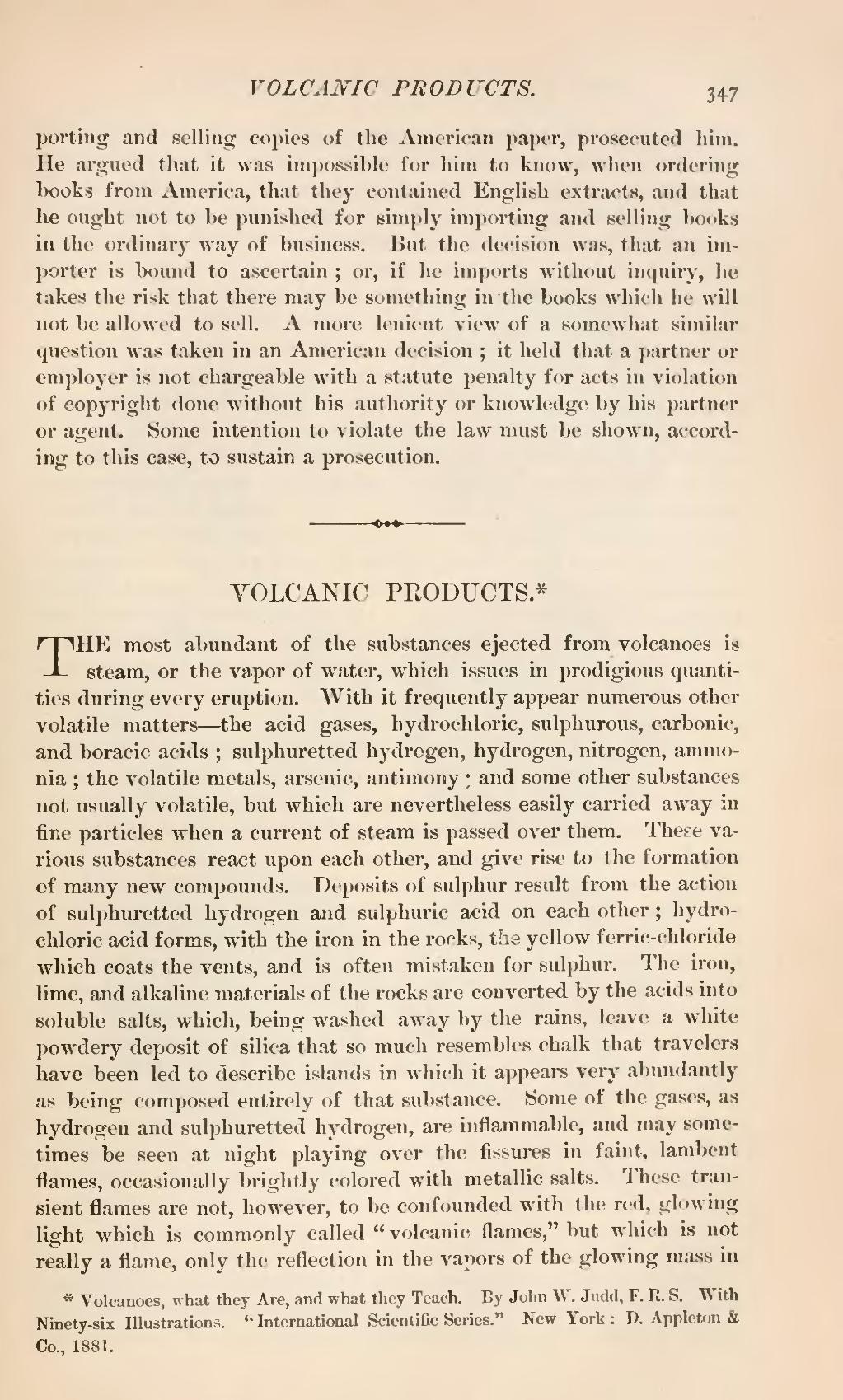porting and selling copies of the American paper, prosecuted him. He argued that it was impossible for him to know, when ordering books from America, that they contained English extracts, and that he ought not to be punished for simply importing and selling books in the ordinary way of business. But the decision was, that an importer is bound to ascertain; or, if he imports without inquiry, he takes the risk that there may be something in the books which he will not be allowed to sell. A more lenient view of a somewhat similar question was taken in an American decision; it held that a partner or employer is not chargeable with a statute penalty for acts in violation of copyright done without his authority or knowledge by his partner or agent. Some intention to violate the law must be shown, according to this case, to sustain a prosecution.
| VOLCANIC PRODUCTS.[1] |
THE most abundant of the substances ejected from volcanoes is steam, or the vapor of water, which issues in prodigious quantities during every eruption. With it frequently appear numerous other volatile matters—the acid gases, hydrochloric, sulphurous, carbonic, and boracic acids; sulphuretted hydrogen, hydrogen, nitrogen, ammonia; the volatile metals, arsenic, antimony; and some other substances not usually volatile, but which are nevertheless easily carried away in fine particles when a current of steam is passed over them. These various substances react upon each other, and give rise to the formation of many new compounds. Deposits of sulphur result from the action of sulphuretted hydrogen and sulphuric acid on each other; hydrochloric acid forms, with the iron in the rocks, the yellow ferric-chloride which coats the vents, and is often mistaken for sulphur. The iron, lime, and alkaline materials of the rocks are converted by the acids into soluble salts, which, being washed away by the rains, leave a white powdery deposit of silica that so much resembles chalk that travelers have been led to describe islands in which it appears very abundantly as being composed entirely of that substance. Some of the gases, as hydrogen and sulphuretted hydrogen, are inflammable, and may sometimes be seen at night playing over the fissures in faint, lambent flames, occasionally brightly colored with metallic salts. These transient flames are not, however, to be confounded with the red, glowing light which is commonly called "volcanic flames," but which is not really a flame, only the reflection in the vapors of the glowing mass in
- ↑ Volcanoes, what they Are, and what they Teach. By John W. Judd, F.R.S. With Ninety-six Illustrations. "International Scientific Series." New York: D. Appleton & Co., 1881.
